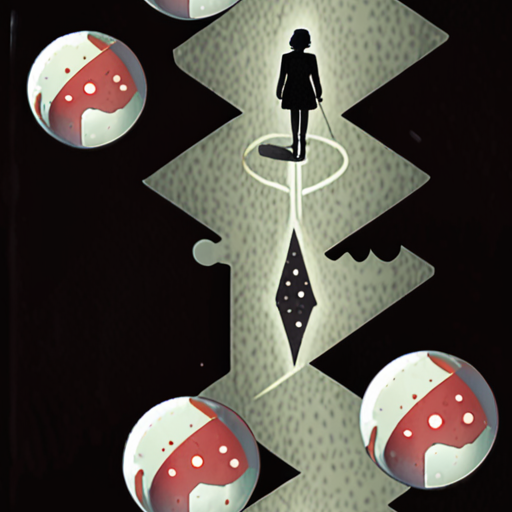Have you ever found yourself suddenly transported back in time, reliving a moment from your past with vivid clarity? This phenomenon, known as a vintage flashback, can be both fascinating and unsettling, leaving many wondering what exactly is happening in their minds. As we delve into the mysteries of these fleeting moments, we’ll explore the complexities of flashback experiences, examining the underlying factors that contribute to their occurrence and the ways in which they can impact our lives.

Understanding Flashbacks
Flashbacks are a common symptom experienced by individuals who have gone through traumatic events.
- A flashback is a sudden, involuntary recollection of a past event, often accompanied by intense emotions and sensations.
- These episodes can be triggered by various stimuli, such as sights, sounds, smells, or even thoughts.
- During a flashback, the individual may relive the traumatic experience as if it were happening again, which can be distressing and disorienting.
Causes and Triggers
Flashbacks can be caused by various factors, including:
- Traumatic experiences, such as physical or emotional abuse, combat, or accidents.
- Stressful events, like natural disasters or car accidents.
- Mental health conditions, such as post-traumatic stress disorder (PTSD), anxiety disorders, or depression.
- Substance abuse or withdrawal.
Symptoms and Effects
Individuals experiencing flashbacks may exhibit various symptoms, including:
- Intense fear, anxiety, or panic.
- Dissociation, feeling disconnected from oneself or surroundings.
- Physical symptoms, such as rapid heartbeat, sweating, or trembling.
- Emotional numbing or avoidance behaviors.
Coping Mechanisms and Treatment
Managing flashbacks requires a combination of self-care techniques, professional therapy, and support systems.
- Grounding techniques, such as deep breathing, progressive muscle relaxation, or mindfulness meditation, can help individuals regain control and calmness during a flashback.
- Seeking professional help from a therapist or counselor can provide a safe space to process and work through traumatic experiences.
- Support groups, online forums, or hotlines can connect individuals with others who understand their struggles.
- Engaging in regular exercise, practicing self-compassion, and developing healthy coping mechanisms can aid in managing flashbacks and promoting overall well-being.
Resources and Support
For those struggling with flashbacks, there are various resources available:
- The National Alliance on Mental Illness (NAMI) offers education, support, and advocacy for mental health conditions, including PTSD and anxiety disorders.
- The Substance Abuse and Mental Health Services Administration (SAMHSA) provides information and resources for substance abuse treatment and mental health services.
- The American Psychological Association (APA) offers guidelines for seeking mental health care and finding a qualified therapist.
Types of Flashbacks
Flashbacks are a common symptom experienced by individuals who have undergone traumatic events.
- Somatic Flashbacks:
- These sensations can manifest as pain, numbness, or tingling in various parts of the body.
- They may also involve intense emotions such as fear, anxiety, or panic.
- Emotional Flashbacks:
- During an emotional flashback, a person may feel overwhelmed by emotions such as sadness, anger, or despair.
- They may also experience dissociation, which involves feeling disconnected from their surroundings or themselves.
Somatic flashbacks occur when a person experiences physical sensations reminiscent of a past traumatic event.
Emotional flashbacks, on the other hand, involve reliving the emotional intensity of a past traumatic event.
Understanding the differences between somatic and emotional flashbacks can help individuals better cope with their symptoms and seek appropriate treatment.

What Causes Random Flashbacks?
Random flashbacks can be a distressing and confusing experience, leaving individuals wondering what triggers these episodes.
- Stress and Trauma: Prolonged exposure to stress and traumatic events can lead to the development of flashbacks. When the brain processes traumatic experiences, it may replay them in the form of vivid memories, often accompanied by intense emotions.
- Sleep Deprivation: Lack of sleep or disrupted sleep patterns can contribute to the occurrence of flashbacks. During REM sleep, the brain consolidates memories, and a lack of restful sleep can cause these memories to resurface in the form of flashbacks.
- Mental Health Conditions: Certain mental health conditions, such as post-traumatic stress disorder (PTSD), anxiety disorders, and depression, can increase the likelihood of experiencing flashbacks.
- Substance Abuse: Substance abuse, particularly with stimulants and hallucinogens, can trigger flashbacks in individuals who have experienced trauma or have a history of substance abuse.
- Sensory Triggers: Sensory stimuli, such as certain smells, sounds, or visual cues, can trigger flashbacks in individuals who have experienced trauma.
Understanding the potential causes of random flashbacks can help individuals take steps to manage and prevent these episodes. By addressing underlying issues, such as stress and trauma, and practicing self-care techniques, individuals can reduce the frequency and intensity of flashbacks.
Managing Flashbacks
There are several strategies that can help individuals manage flashbacks, including:
- Cognitive-Behavioral Therapy (CBT): CBT is a type of therapy that helps individuals identify and change negative thought patterns and behaviors associated with flashbacks.
- Mindfulness Techniques: Mindfulness practices, such as meditation and deep breathing, can help individuals stay present and focused, reducing the intensity of flashbacks.
- Grounding Techniques: Grounding techniques, such as focusing on the five senses, can help individuals ground themselves in the present moment and reduce the impact of flashbacks.
- Self-Care: Engaging in regular exercise, healthy eating, and sufficient sleep can help reduce stress and anxiety, making it easier to manage flashbacks.
Seeking Support
If you or someone you know is experiencing frequent or severe flashbacks, it is essential to seek support from a mental health professional. A therapist can help develop coping strategies and provide a safe space to process traumatic experiences.

Understanding Flashbacks
Flashbacks are a common symptom experienced by individuals who have undergone traumatic events, often associated with Post-Traumatic Stress Disorder (PTSD). They can manifest as vivid memories, emotions, or sensory experiences that feel incredibly real, making it challenging for the individual to distinguish between what happened in the past and what is happening in the present moment.
Types of Flashbacks
There are several types of flashbacks, including visual, auditory, olfactory, tactile, and kinesthetic. Visual flashbacks involve seeing images or scenes from the past, while auditory flashbacks involve hearing sounds or voices. Olfactory flashbacks involve smelling scents or odors that trigger memories, and tactile flashbacks involve feeling sensations on the skin. Kinesthetic flashbacks involve experiencing physical sensations, such as pain or numbness.
Causes and Triggers
Flashbacks can be triggered by various stimuli, including sights, sounds, smells, or even certain emotions. They can also be triggered by internal factors, such as stress, anxiety, or fatigue. In some cases, flashbacks can occur spontaneously, without any apparent trigger. Understanding the underlying causes and triggers of flashbacks is crucial in developing effective coping mechanisms and treatments.
Treatment Options
Treatment options for flashbacks vary depending on the individual’s needs and circumstances. Cognitive-behavioral therapy (CBT), eye movement desensitization and reprocessing (EMDR), and medication are commonly used to manage symptoms. CBT helps individuals identify and challenge negative thought patterns, while EMDR aims to process and integrate traumatic memories. Medication can help alleviate symptoms of anxiety, depression, and insomnia.
Self-Care Strategies
Developing healthy self-care habits is essential in managing flashbacks. Engaging in regular exercise, practicing relaxation techniques, such as meditation or deep breathing, and maintaining a consistent sleep schedule can help reduce symptoms. Building a support network of friends, family, or a therapist can also provide emotional comfort and stability. By prioritizing self-care and seeking professional help when needed, individuals can better navigate the complexities of flashbacks and work towards recovery.
- Identify triggers and develop coping strategies
- Prioritize self-care and engage in regular exercise
- Practice relaxation techniques, such as meditation or deep breathing
- Maintain a consistent sleep schedule
- Build a support network of friends, family, or a therapist
Understanding Flashbacks
A flashback can be a disorienting and unsettling experience, making it difficult to distinguish between reality and memory.
- Distinguishing Between Reality and Memory
- Physical Sensations During Flashbacks
- Emotional Connection to Past Events
- Impact of Trauma on Flashback Experiences
When experiencing a flashback, individuals may feel disconnected from the present moment, reliving a past event as if it were happening again.
- Feeling Physically Present in the Past
- Sensing Emotions Associated with the Past Event
- Difficulty Distinguishing Between Reality and Memory
- Increased Anxiety or Stress Levels
Flashbacks can be triggered by various factors, including sensory stimuli, emotional triggers, or exposure to situations reminiscent of past traumatic events.
Individuals who have experienced trauma may be more prone to flashbacks due to the intense emotional connection to the past event.
Seeking professional help from a mental health expert can provide valuable guidance and support in managing flashback experiences.
By understanding the complexities of flashbacks, individuals can better navigate these challenging experiences and work towards healing and recovery.

What Happens in the Brain During a Flashback?
The phenomenon of flashbacks has long been a subject of interest in psychology and neuroscience, particularly in relation to post-traumatic stress disorder (PTSD). A flashback is essentially a sudden, involuntary recollection of a traumatic event, often accompanied by intense emotions and sensations.
- Neural Basis: Research suggests that flashbacks involve the reactivation of neural pathways associated with the original traumatic event. This can lead to the reliving of the traumatic experience, complete with vivid sensory details and emotional arousal.
- Brain Regions Involved: Studies have identified several brain regions that exhibit heightened activity during flashback episodes, including the amygdala, hippocampus, and prefrontal cortex. These regions play critical roles in emotion regulation, memory consolidation, and cognitive processing.
- Emotional Processing: Flashbacks often involve intense emotional arousal, which can be attributed to the reactivation of emotional circuits in the brain. The amygdala, in particular, is responsible for detecting threats and triggering fear responses, which can contribute to the distressing nature of flashbacks.
In addition to these neural mechanisms, flashbacks may also be influenced by various psychological factors, such as trauma severity, coping mechanisms, and social support networks. Understanding the complex interplay between biological and psychological processes can provide valuable insights into the development and treatment of PTSD.
Key Takeaways:
- Flashbacks involve the reactivation of neural pathways associated with traumatic events.
- Several brain regions, including the amygdala, hippocampus, and prefrontal cortex, exhibit heightened activity during flashback episodes.
- Emotional processing plays a crucial role in the development and maintenance of flashbacks.
Conclusion:
Flashbacks remain a poorly understood aspect of PTSD, and further research is needed to elucidate their underlying mechanisms. By exploring the neural and psychological factors contributing to flashbacks, we can develop more effective treatments and interventions for individuals affected by PTSD.
0 Comments